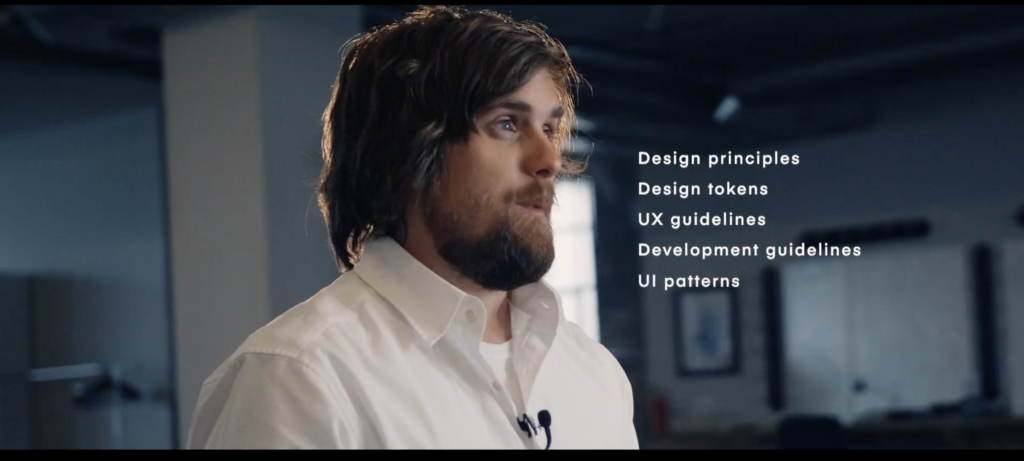
What is a design system?
Design systems are a tool/system to create unity within a set of design components. They help us find patterns and eliminate any aspects that may be confusing or hindering the design in a team. It is about simplifying and finding common ground within a team. Some things may have different names, be slightly different versions of other components that have been made, or maybe some things don’t fit together with the patterns that have been established. Essentially a design system is a design guideline that everyone in the team can understand and refer to. This creates unity and helps the team to fluidly work together.
Examples!?

If I were to break this down into an example I would say it’s like folding your laundry for your daily clothing. You have your shirts, pants, underwear and socks and each one has a specific drawer they go in. You fold up your clothing, recognizing each one has a name brand that you understand and own. While folding your clothes and putting them in their respective drawers you suddenly run into some of your holiday sweaters for Christmas, where would these go? Certainly not with your daily wardrobe. This could be put away into another system, perhaps your holiday attire system. You want your daily clothing system to only contain the clothing that fits within that category. Simplify your clothing options, and make it more conventional for you to get dressed everyday without having to sort through all of these irrelevant options.
Now let’s add a team member to the mix. Let’s say your mom is helping you fold your clothes in the other room. While folding your clothes your mom yells out “where do you want your unmentionables?”. you might not know what she means by this. So you walk out to the room and see that she is talking about what you normally call “underwear” . You can then add or remove this term from your design set to make your “team” more efficient in your clothing folding procedure. Once you inform your mother of how your system works, she won’t need to yell out where an item goes and you and your “team” can keep working fluidly together. Getting laundry done more efficiently and correct.
A Team Strategy
A design system is a strategy employed by companies and teams to help them create familiar components or to employ familiar jargon. Brad Frost uses the example of “pages”. Pages is a term coined since the beginning of the internet. If you use the term pages, most people are able to figure out what you are referring to. Because of our long history and use of this term people are familiar with this term and come to expect it. To put it succinctly, it is easy for people to conceptualize and recognize. When you create a system it is best to be recognizable. What if a company started using a new term like “sheets” or “stacks” instead of pages. Would this term be recognizable for most? And how would this affect the user? When you deviate from this system, this recognizable pattern, you are asking your user to learn something new. While this is only one thing being changed, imagine if we had a plethora of different terms we used throughout a website. We would be asking our user to be doing a-lot of learning instead of doing what they came to the website to accomplish.
But how should we use it?
“A design system is not about invention, it’s about curation.”
– Josh Clark, Episode 1 – The heartache of design at scale
While a design system is a good idea, even following a familiar set of systems already created, We do still need to be careful. While design systems can help people understand content and organize components greatly, we can run the risk of being clones of other content. Brad Frost compares this with his experience of watching sci Fi movies as a child, and how each character appeared to be “dressed the same”. Design systems can expedite work and achieve great understanding in a team, but you can run the risk of being, bland and un-unique. While it may be convenient to dress your design into similar “jumpsuits” thats not necessarily how humans work. I believe Brad Frost summarizes this very nicely “We all have different tastes, goals, and desires. Variety, as they say, is the spice of life, and fashion, music, and design reflect our diverse nature.”. In the end it is up to the designer to decide what tools to use and when and where. To summarize, you are not just using a design system, you are working towards curating your own design system.
https://www.invisionapp.com/design-system-manager/expert-advice/heartache-design-scale

